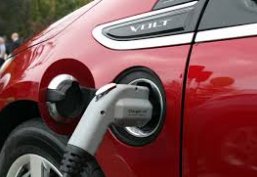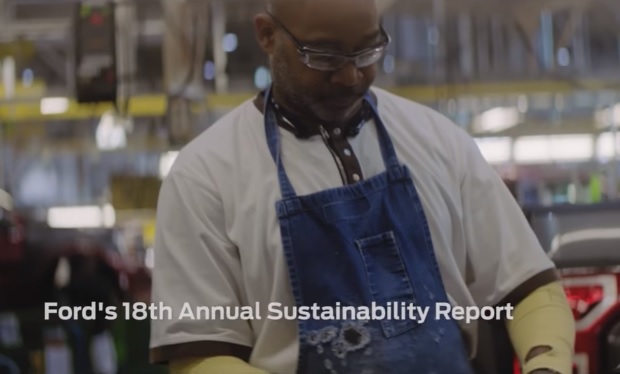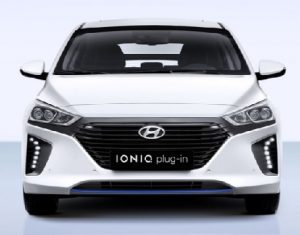 If you’re reading media coverage and market reports on electric vehicle (EV) and hybrid sales trends, it’s easy to get confused over what’s being described. One might think it would mean plug-in electric vehicles and hybrid electric vehicles – with plug-ins including battery electric (Nissan Leaf, Tesla Model S) and plug-in hybrid (Chevrolet Volt, Ford C-Max Energi); and hybrids representing models such as the Toyota Prius (not including the Prius Plug-in Hybrid) and Ford Fusion Hybrid. However, lately there have been reports and media coverage that make the categories more confusing; and make the prospect of marketing, selling, and purchasing these vehicle technologies even more murky and challenging.
If you’re reading media coverage and market reports on electric vehicle (EV) and hybrid sales trends, it’s easy to get confused over what’s being described. One might think it would mean plug-in electric vehicles and hybrid electric vehicles – with plug-ins including battery electric (Nissan Leaf, Tesla Model S) and plug-in hybrid (Chevrolet Volt, Ford C-Max Energi); and hybrids representing models such as the Toyota Prius (not including the Prius Plug-in Hybrid) and Ford Fusion Hybrid. However, lately there have been reports and media coverage that make the categories more confusing; and make the prospect of marketing, selling, and purchasing these vehicle technologies even more murky and challenging.
For many consumers and fleets, buying either of these technologies is a new and confusing experience. The price differential compared to high fuel economy gasoline engine cars is one factor; and the need for charging stations and the amount of time needed for full charging are other questions that come up all the time. Why invest in a new technology when you can get cost-competitive traditional engines with higher mileage?
A new study by the University of Michigan’s Transportation Research Institute, “What Do Current Owners of Hybrids and Non-Hybrids Think about Hybrids,” speaks to that challenge. The survey received responses from 1,002 hybrid owners and 1,038 owners of non-hybrid cars. It focused primarily on their experience with current hybrids and plans for future vehicle purchases. About 80% of current hybrid owners will buy a hybrid with about one third of them intending to buy a plug-in hybrid. For those who won’t be buying another hybrid as their next vehicle, about one sixth of them will be buying an electric vehicle. This study defines and segments hybrids and electric vehicles differently than other sources have been in recent years. Most of the time, plug-in hybrids are listed as “electric vehicles” or “plug-in electric vehicles” in data reports, while Transportation Research Institute places it in the “hybrid” category. (To receive a copy of the University of Michigan report, email Michael Sivak at sivak@umich.edu.)
Early September saw a wave of media coverage on analysts stating that EV and hybrid sales were fizzling. Edmunds.com saw a stalled August market for battery-powered cars – including hybrids, plug-in hybrids, and battery electric vehicles. A drop in hybrid sales offset gains made in the plug-in hybrid and battery electric market. Hybrid sales were down 9.1% since August 2013, but plug-ins were up 9.5% since a year ago. The Edmunds study said that the drop in hybrid sales offset sales gains in plug-in hybrids and battery electric vehicles with hybrids selling a higher volume than that achieved by plug-in hybrids and battery electric vehicles. The study refers to all of them as “electrified vehicles.”
Here’s how leading sources of data on EV and hybrid sales are defining the numbers:
- Electric Drive Transportation Association (EDTA) defines “electric drive” sales figures as covering light-duty hybrid vehicles and total plug-in vehicles (with plug-ins breaking out into plug-in hybrids and battery electric vehicles). In September, there were 31,285 hybrid vehicles and 9,340 total plug-in vehicles sold that month. Of the total plug-ins, 3,357 were plug-in hybrids and 5,983 were battery EVs.
- Plug In America’s Plug-in Vehicle Tracker features battery electric and plug-in hybrid electric vehicles. The difference here is that everything is covered – light duty passenger vehicles, commercial vehicles, buses, motorcycles, and three wheelers. It doesn’t include sales figures, but it does offer pricing and driving range numbers.
- HybridCars.com has changed its formatting this year – breaking out battery electric vehicles and plug-in hybrid vehicles into separate charts; they’d previously been featured in one category as plug-in electric vehicles. The HybridCars.com monthly report covers hybrids, plug-in hybrids, compressed natural gas (with only the Honda Civic Natural Gas featured on that chart), and diesel passenger cars (aka clean diesel).
- AutoblogGreen considers them to be “green cars” in its monthly reporting, and includes hybrids, plug-in hybrids, battery electric, clean diesel, and a few fuel-efficient technologies like the Buick Regal eAssist and Chevrolet Malibu ECO mild hybrid. The sales figures are broken out by each brand and company. Analysis of sales trends is based on the total green car sales for the month in relation to recent months and year-ago numbers.
When looking at all of these sales figures and category definitions, here are a few things to keep in mind:
- Purchase incentives are being offered on battery electric and plug-in hybrid models and don’t exist on hybrids anymore. Center for Renewable Energy’s website provides an example of what’s available on the market these days. This just covers California, but it also features federal incentives and information on carpool lane stickers – other sources that are taken seriously by car shoppers. Incentives used to be offered on hybrids until their sales volume increased and plug-ins entered the market.
- It is a very good idea to have industry standards in place, as Society of Automotive Engineers would attest to. Having uniformity in industry terminology becomes important when it comes to government legislation and regulation, corporate policies, research studies, investors, and buyers of the products.
- Simplifying the wording is a good idea. Extended range electric vehicle or plug-in hybrid electric vehicle? I prefer plug-in hybrid. Pure electric vehicle or battery electric vehicle? I vote for battery electric vehicle. Hydrogen fuel cell electric vehicle or hydrogen fuel cell vehicle? I would take the word “electric” out of that one. Hybrid electric vehicle or hybrid? Hybrid is a good way to simplify it. And what to do about electric vehicle (EV). It seems to cover both battery electric and plug-in hybrid. Some say it should be plug-in electric vehicle (PEV) at all times; I’m fine with EV since that’s widely used and accepted – and I would rather use it regularly than throwing in “electric car” occasionally.
- Automakers are still working out their definitions of “electrified vehicles” and sometimes group hybrids and EVs together. Ford offers hybrid and plug-in hybrid versions of its Ford C-Max and Fusion models – with the plug-in hybrids under the “Energi” label. Toyota is offering the Prius Plug-in Hybrid version of its popular Prius brand. The price is several thousand dollars higher than the traditional hybrid version of the Prius, but there are incentives on the plug-in version.
- The experience can be confusing and stress-inducing. Survey researchers at Indiana University released an exhaustive study that found consumers are misinformed about EVs – with 75% incorrectly underestimating the benefits of the vehicles. I got a phone call recently from a friend shopping for a car with his wife. They’re open to owning a hybrid or plug-in, but confusion over the differences between hybrid and EV models doesn’t help; they could easily put off the purchase even longer.
- Fleets that have yet to acquire any vehicles outside traditional internal combustion engine models have a similar experience and have definite concerns over their return on investments. Electrified commercial vehicles make their research a bit murky as well, especially with Smith Electric Vehicles and Boulder Electric Vehicles going through financial struggles.
- While the total sales volume of EVs and hybrids isn’t growing by leaps and bounds, if you include clean diesel and natural gas as “alternative fuel vehicles” or “green cars,” the sales numbers represent their own segment gaining more credibility. Eventually, those sales figures will likely include hydrogen fuel cell, propane autogas, and biofuels.
- Effective educational and question-and-answer materials are very much needed in the marketplace. EDTA and Plug In America are doing a very good job on this front, but stakeholders in clean transportation have a lot of work to do on getting the word out to consumers and fleets who will be making these acquisitions in years to come. Clear labelling of vehicle types would help simplify the process.
 drinkable water in manufacturing. Since 2000, Ford has cut water use by more than 61 percent. It’s partnership with Jose Cuervo continued using agave plants for sustainable bioplastics being placed in Ford vehicles. Now about 300 vehicle parts come from renewable sources such as soybeans, cotton, wood, flax, jute, and natural rubber. Its aluminum closed-loop recycling system recycles about 20 million pounds of military-grade aluminum alloy per month, enough to build more than 37,000 F-Series truck bodies a month. Ford continues to reduce the footprint of its supply chain with an enhanced Partnership for a Cleaner Environment program that has grown to more than 40 suppliers in 40 countries – up from 25 suppliers in 2015. The automakers zero-waste-to-landfill program has been expanded to a total of 82 Ford facilities around the world, where no waste is sent to landfills. You can read the company’s 18th annual sustainability report to learn more, plus read and watch a video on improving safety and fuel economy, reducing manufacturing carbon dioxide, the company global electrification strategy, and sustainable mobility services.
drinkable water in manufacturing. Since 2000, Ford has cut water use by more than 61 percent. It’s partnership with Jose Cuervo continued using agave plants for sustainable bioplastics being placed in Ford vehicles. Now about 300 vehicle parts come from renewable sources such as soybeans, cotton, wood, flax, jute, and natural rubber. Its aluminum closed-loop recycling system recycles about 20 million pounds of military-grade aluminum alloy per month, enough to build more than 37,000 F-Series truck bodies a month. Ford continues to reduce the footprint of its supply chain with an enhanced Partnership for a Cleaner Environment program that has grown to more than 40 suppliers in 40 countries – up from 25 suppliers in 2015. The automakers zero-waste-to-landfill program has been expanded to a total of 82 Ford facilities around the world, where no waste is sent to landfills. You can read the company’s 18th annual sustainability report to learn more, plus read and watch a video on improving safety and fuel economy, reducing manufacturing carbon dioxide, the company global electrification strategy, and sustainable mobility services. said he met with Tesla earlier this year to discuss what the Tesla Semi truck will be like that CEO Elon Musk announced last year and said would be revealed in September. It will be ideal for short-haul trucking and won’t have anything like the capacity of 1000-miles per fueling big rigs typically seen on U.S. highways. The Tesla Semi could work for companies needing freight hauling from ports to warehouses and other day trips. Tesla will face a series of challenges including ramping up later this year for the Tesla Model 3.
said he met with Tesla earlier this year to discuss what the Tesla Semi truck will be like that CEO Elon Musk announced last year and said would be revealed in September. It will be ideal for short-haul trucking and won’t have anything like the capacity of 1000-miles per fueling big rigs typically seen on U.S. highways. The Tesla Semi could work for companies needing freight hauling from ports to warehouses and other day trips. Tesla will face a series of challenges including ramping up later this year for the Tesla Model 3.
 Hyundai Motor Company has been surging forward in the global auto market, and plans to become No. 2 in green car sales after Toyota by 2020. Hyundai unveiled its signature brand last month at the New York Auto Show – the Ioniq – which will be the auto industry’s first-ever model available in hybrid, plug-in hybrid, and battery-electric iterations and built on the same drivetrain. It will be rolling out later this year. Within the next four years, the Korean automaker intends to flood the market with 26 green vehicles, including hybrid, plug-in hybrid, all-electric, and hydrogen-powered models.
Hyundai Motor Company has been surging forward in the global auto market, and plans to become No. 2 in green car sales after Toyota by 2020. Hyundai unveiled its signature brand last month at the New York Auto Show – the Ioniq – which will be the auto industry’s first-ever model available in hybrid, plug-in hybrid, and battery-electric iterations and built on the same drivetrain. It will be rolling out later this year. Within the next four years, the Korean automaker intends to flood the market with 26 green vehicles, including hybrid, plug-in hybrid, all-electric, and hydrogen-powered models.